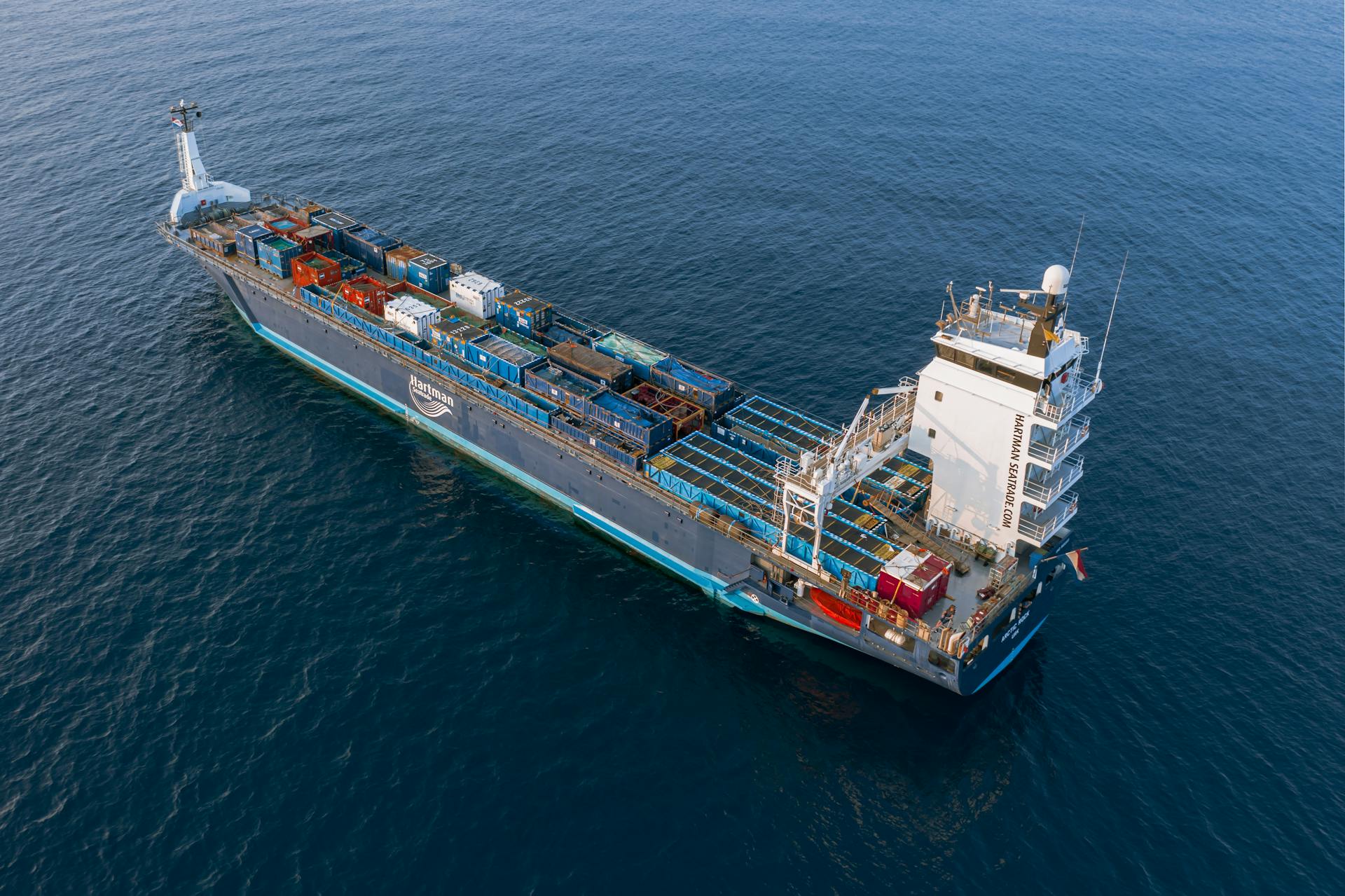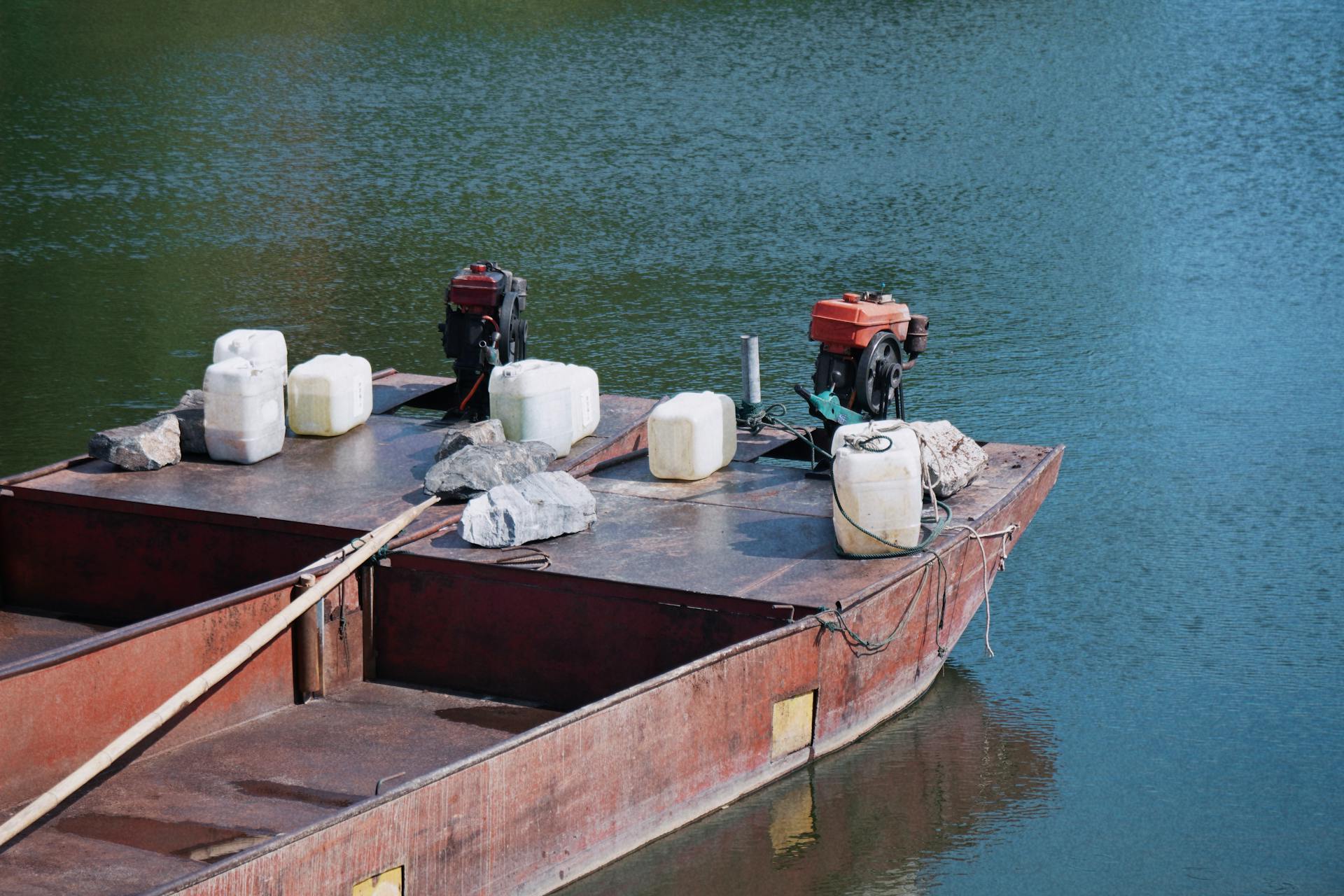
The United States has a set of regulations in place to control the discharge of ballast water from ships into its waters, with the goal of preventing the spread of invasive species.
The first regulation was introduced in 1988 by the U.S. Coast Guard, which required ships to exchange their ballast water in designated exchange zones.
In 2012, the U.S. Coast Guard issued a revised regulation that increased the stringency of ballast water management requirements, requiring ships to use treatment systems that could remove 99.9% of living organisms from the water.
The U.S. Environmental Protection Agency (EPA) also plays a key role in regulating ballast water, having established a program to oversee the development and implementation of ballast water treatment technologies.
Worth a look: Regulation of Ship Pollution in the United States
Regulatory History
In January 1999, a group of conservation organizations, fishing groups, native American tribes, and water agencies petitioned EPA to repeal its 1973 regulation exempting ballast water discharge under the Clean Water Act.

The petition argued that ballast water should be regulated as the “discharge of a pollutant” under the National Pollutant Discharge Elimination System (NPDES) permit program.
EPA rejected the petition in September 2003, stating that the “normal operation” exclusion is long-standing agency policy.
Congress has twice considered the issue of aquatic nuisance species in ballast water, in 1979 and 1996, and did not alter EPA's CWA interpretation.
EPA said that other ongoing federal activities related to control of invasive species in ballast water are likely to be more effective than changing the NPDES rules.
Since 2004, all vessels equipped with ballast water tanks must have a ballast water management plan.
EPA Permits and Requirements
The EPA has been working to regulate ballast water discharges from ships since 2007.
In 2008, the EPA published a Vessel General Permit (VGP) that required the use of best management practices (BMPs) for controlling ballast water, but did not include numeric pollutant discharge limits.

The VGP was updated in 2013 to set numeric ballast water discharge limits for commercial vessels 79 feet (24 m) in length or greater.
Approximately 69,000 vessels, both domestic and foreign flagged, are covered by the 2013 VGP.
The EPA issued a separate permit for smaller commercial vessels in 2014, and the existing 2013 VGP requirements are expected to remain in force until new regulations are introduced.
The Vessel Incidental Discharge Act (VIDA) was signed into law in 2018, which impacts the USCG Final Rule and the Vessel General Permit (VGP) system, and provides a new framework where EPA leads on establishing standards on ballast water and the USCG leads on monitoring and enforcement.
2008 Vessel General Permit
In 2008, the EPA published a Vessel General Permit (VGP) regulating vessel discharges, including ballast water from all commercial vessels, including fishing vessels.
The permit required the use of best management practices (BMPs) for controlling ballast water, but did not include numeric pollutant discharge limits.
This was a significant step towards regulating vessel discharges, but it was just the beginning of a longer process to protect U.S. waterways from pollutants.
EPA General Permits 2013-2014
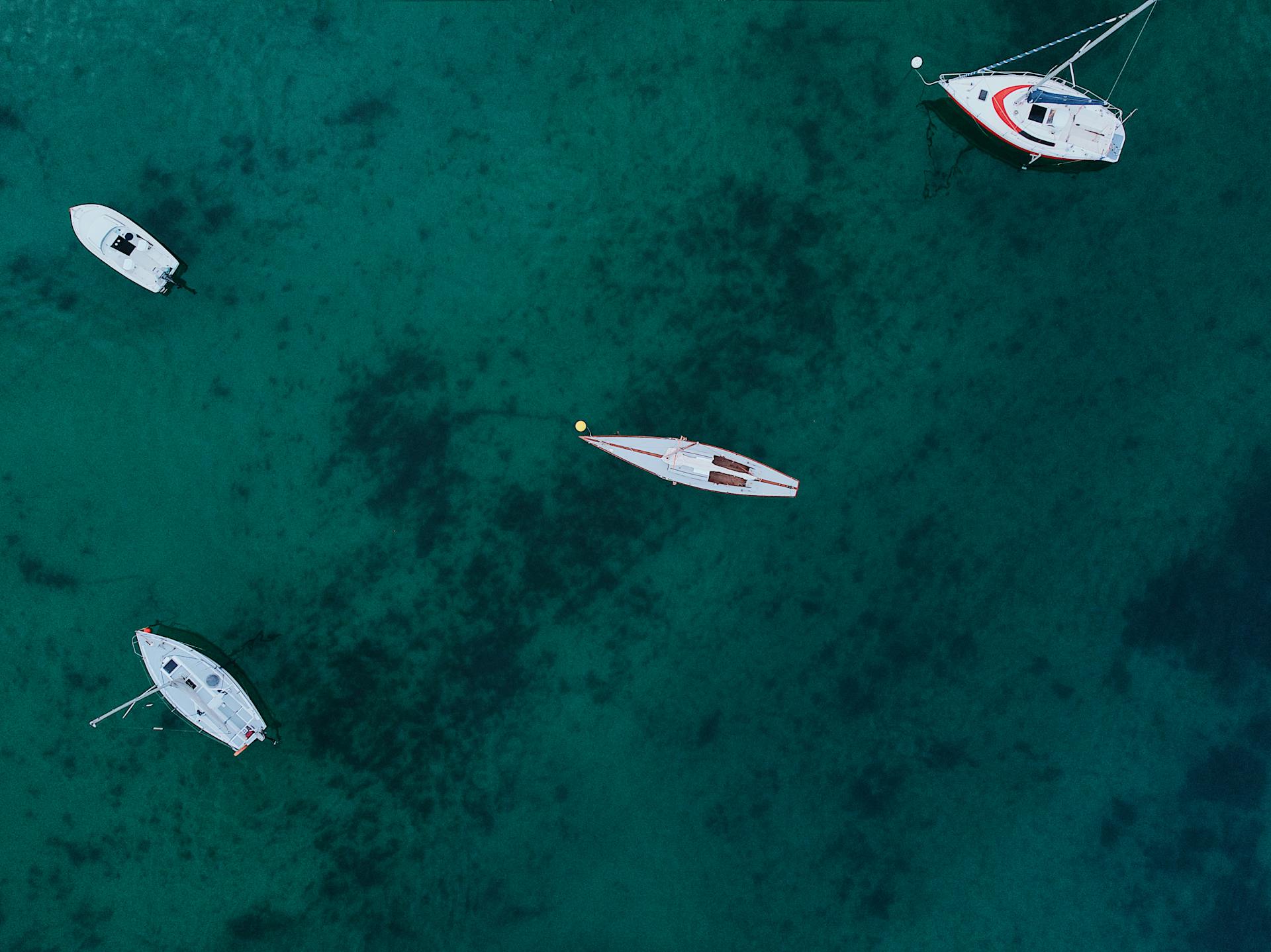
The EPA General Permit for 2013 and 2014 was a significant development in regulating vessel discharges.
In 2013, the EPA published its latest Vessel General Permit, which sets numeric ballast water discharge limits for commercial vessels 79 feet (24 m) in length or greater.
The permit applies to approximately 69,000 vessels, both domestic and foreign flagged.
The EPA issued a separate permit for smaller commercial vessels in 2014.
The Coast Guard worked with EPA in developing the scientific basis and the regulatory requirements in the VGP.
EPA Vessel General Permit (VGP)
The EPA Vessel General Permit (VGP) is a crucial regulation for commercial vessels operating in US waters. It was first introduced in 2008, requiring the use of best management practices (BMPs) for controlling ballast water, but did not include numeric pollutant discharge limits.
The permit has undergone revisions, with the latest version published in 2013. This updated permit sets numeric ballast water discharge limits for commercial vessels 79 feet (24 m) in length or greater. Approximately 69,000 vessels, both domestic and foreign flagged, are covered by the permit.
To comply with the VGP, vessels must maintain written or digital records of their ballast water management activities. These records must include information about sediment disposal and the master's certification of accurate information. The records must be retained onboard the vessel for 2 years.
In addition to recordkeeping, vessels must also implement a ballast water management plan and calibrate sensors to ensure accurate monitoring. The plan must be in accordance with the VGP requirements, and any deviations must be explained and documented.
It's worth noting that the VGP will not be reissued, and the existing 2013 VGP requirements will remain in force until new regulations are introduced. The Vessel Incidental Discharge Act (VIDA) has also impacted the VGP system, with EPA now leading on establishing standards for ballast water and the USCG leading on monitoring and enforcement.
Exemptions and Extensions
Certain types of vessels are exempt from all requirements of this subpart, including Department of Defense or Coast Guard vessels subject to the Nonindigenous Aquatic Nuisance Prevention and Control Act, as amended by the National Invasive Species Act.
Crude oil tankers engaged in coastwise trade are also exempt from specific requirements, such as ballast water management, reporting, and recordkeeping. Vessels that operate exclusively on voyages between ports or places within a single COTP Zone are exempt from these requirements as well.
Table 1 to § 151.2015 provides a detailed breakdown of exemptions for different types of vessels, including exempt and applicable requirements.
The Coast Guard may grant an extension to the implementation schedule for vessels that cannot comply with the ballast water management requirements, provided the vessel's master, owner, operator, agent, or person in charge documents that compliance is not possible.
Exemptions
Exemptions can be a bit confusing, but they're actually pretty straightforward. Some vessels are exempt from certain regulations, and it's essential to know which ones.
The USCG has specific exemptions for certain types of vessels. For example, Department of Defense or Coast Guard vessels subject to 46 U.S.C. 4713 are exempt from all requirements of this subpart, including ballast water management, reporting, and recordkeeping.
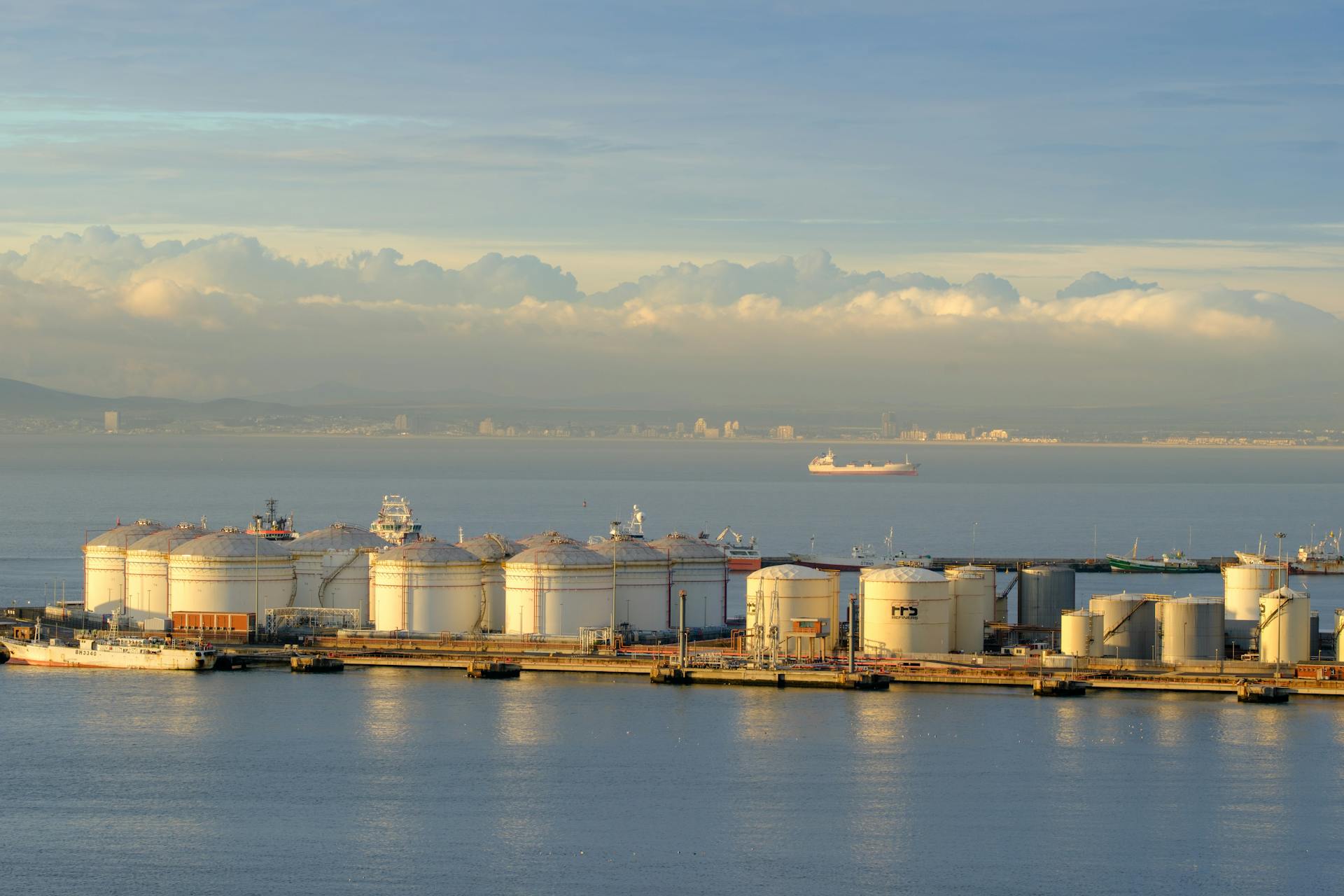
Crude oil tankers engaged in coastwise trade are also exempt from these requirements. Additionally, vessels that operate exclusively on voyages between ports or places within a single COTP Zone are exempt from the same requirements.
There are also exemptions for seagoing vessels that operate in more than a single COTP Zone, do not operate outside of the EEZ, and are less than or equal to 1,600 gross register tons or less than or equal to 3,000 gross tons. These vessels are exempt from ballast water management requirements but must still report and keep records.
Here's a breakdown of the exemptions for different types of vessels:
These exemptions can help simplify compliance with regulations, but it's essential to understand the specific requirements for each vessel type.
Permit Moratorium Extensions
Congress has extended the moratorium exempting NPDES permit coverage for small vessels several times. The latest moratorium expired on January 19, 2018.
Vessels smaller than 79 feet in length, as well as commercial fishing vessels of all sizes, were exempt from having to obtain an NPDES permit for incidental discharges, except for ballast water.

If you're a shipowner, you know how important it is to stay on top of permit requirements. The moratorium extensions have given some vessels a temporary reprieve, but it's essential to know the rules and deadlines.
Here's a brief summary of the moratorium extensions:
These exemptions are crucial for vessels that need to discharge ballast water in US waters. However, it's essential to note that the exemptions don't apply to all types of discharges.
AMS and USCG Extension
If you're a shipowner facing challenges with implementing a ballast water treatment system, you may be eligible for an extension from the USCG. The Coast Guard may grant an extension if you can document that compliance is not possible despite all efforts, and the extension request must be made at least 12 months before the scheduled implementation date.
You can request an extension to use the ballast water exchange method or an Alternate Management System (AMS) that has been accepted by the USCG. Acceptance of an AMS is temporary and does not guarantee future USCG type approval.
Consider reading: United States Committee on the Marine Transportation System
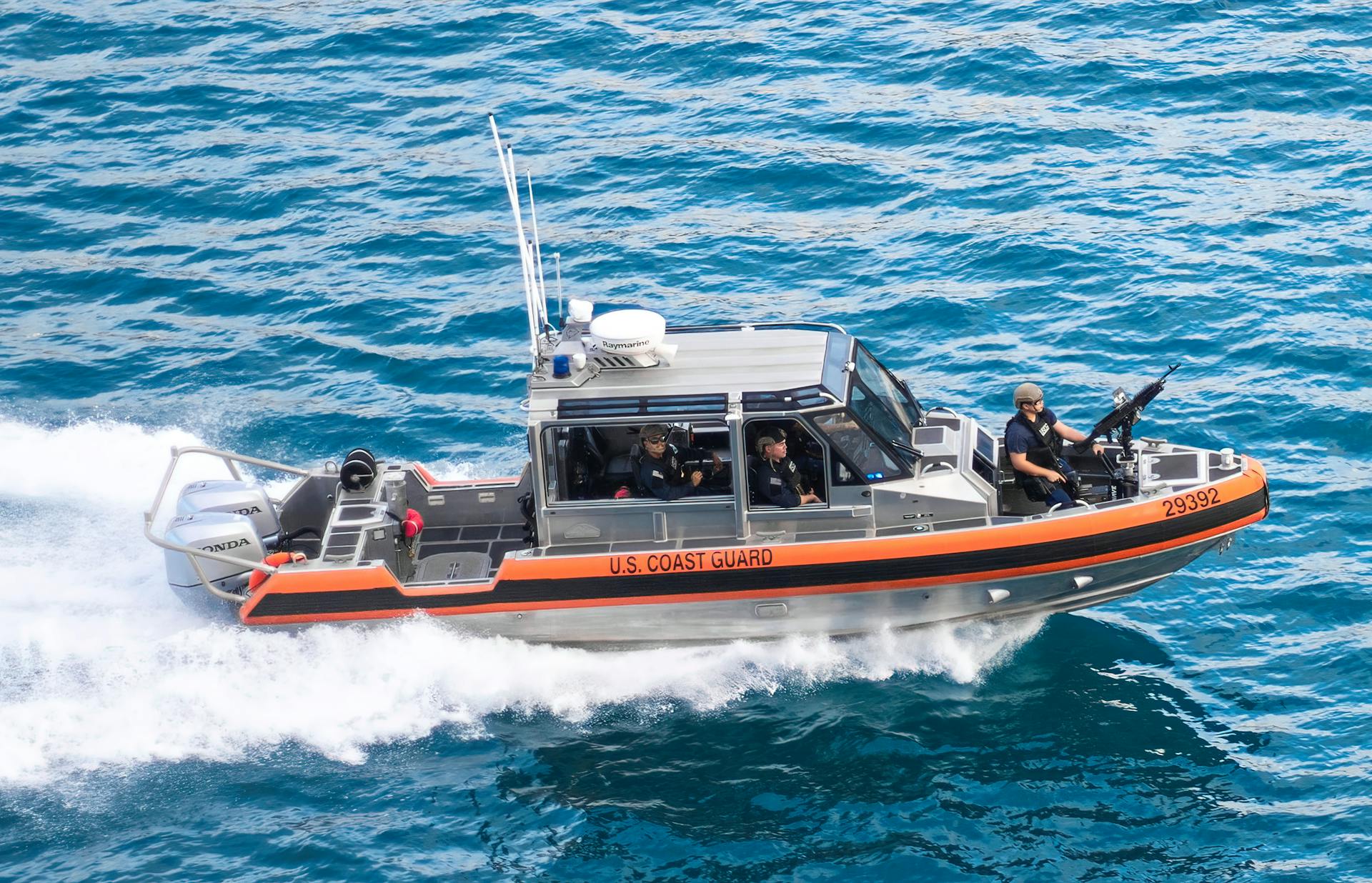
To request an extension, you'll need to provide an explicit statement supported by documentary evidence detailing the reasons for non-compliance, such as delays in commercial availability of the treatment systems. The Coast Guard has made the criteria for granting extensions stricter in recent years.
The USCG has not given AMS acceptance to every IMO D-2 approved system, so it's essential to check the specific requirements for your vessel.
Discharge and Compliance
The Coast Guard may grant an extension to the implementation schedule if a vessel can document that compliance is not possible despite all efforts. The request must be made in writing at least 12 months before the scheduled implementation date.
To discharge ballast water in extraordinary circumstances, a vessel must not be required to have a Coast Guard-approved ballast water management system. The discharge must be only operationally necessary to ensure the safety of the vessel for cargo operations.
The Coast Guard will allow a vessel to discharge ballast water in areas other than the Great Lakes and the Hudson River north of the George Washington Bridge if it cannot practicably meet the requirements of the ballast water management system. The vessel must discharge only the amount of ballast water operationally necessary to ensure the safety and stability of the vessel.
If a vessel's ballast water management system stops operating properly, the person directing the vessel must report the problem to the nearest Captain of the Port or District Commander as soon as practicable. The vessel may continue to the next port of call, subject to the directions of the Captain of the Port or District Commander.
The Coast Guard will normally allow a vessel to employ one of the other ballast water management methods if its installed system is inoperable. The vessel must discharge only the amount of ballast water operationally necessary to ensure the safety and stability of the vessel.
Ballast water records must be made available to the local Captain of the Port upon request. The vessel must clean its ballast tanks regularly to remove sediments and dispose of them according to local, state, and federal regulations.
Enforcement and Penalties
Civil penalties for violating ballast water regulations can be substantial. A person who violates this subpart is liable for a civil penalty not to exceed $35,000.
Each day of a continuing violation counts as a separate offense. A vessel operated in violation of the regulations is liable in rem for any civil penalty assessed under this subpart for that violation.
Knowingly violating the regulations can have severe consequences. A person who knowingly violates the regulations of this subpart is guilty of a class C felony.
Check this out: Oversize Load Permits by State
Management and Regulations
To manage ballast water in the United States, vessels must follow specific regulations. The master, owner, operator, agent, or person in charge of a vessel bound for a US port must maintain written or digital records, including sediment information, and certify the accuracy of the information provided.
These records must include the name and location of the facility where sediment disposal took place, as well as the master's or responsible officer's printed name, title, and signature attesting to the accuracy of the information. The signature requirement may be satisfied by affirming the certification portion of the electronic ballast water report.
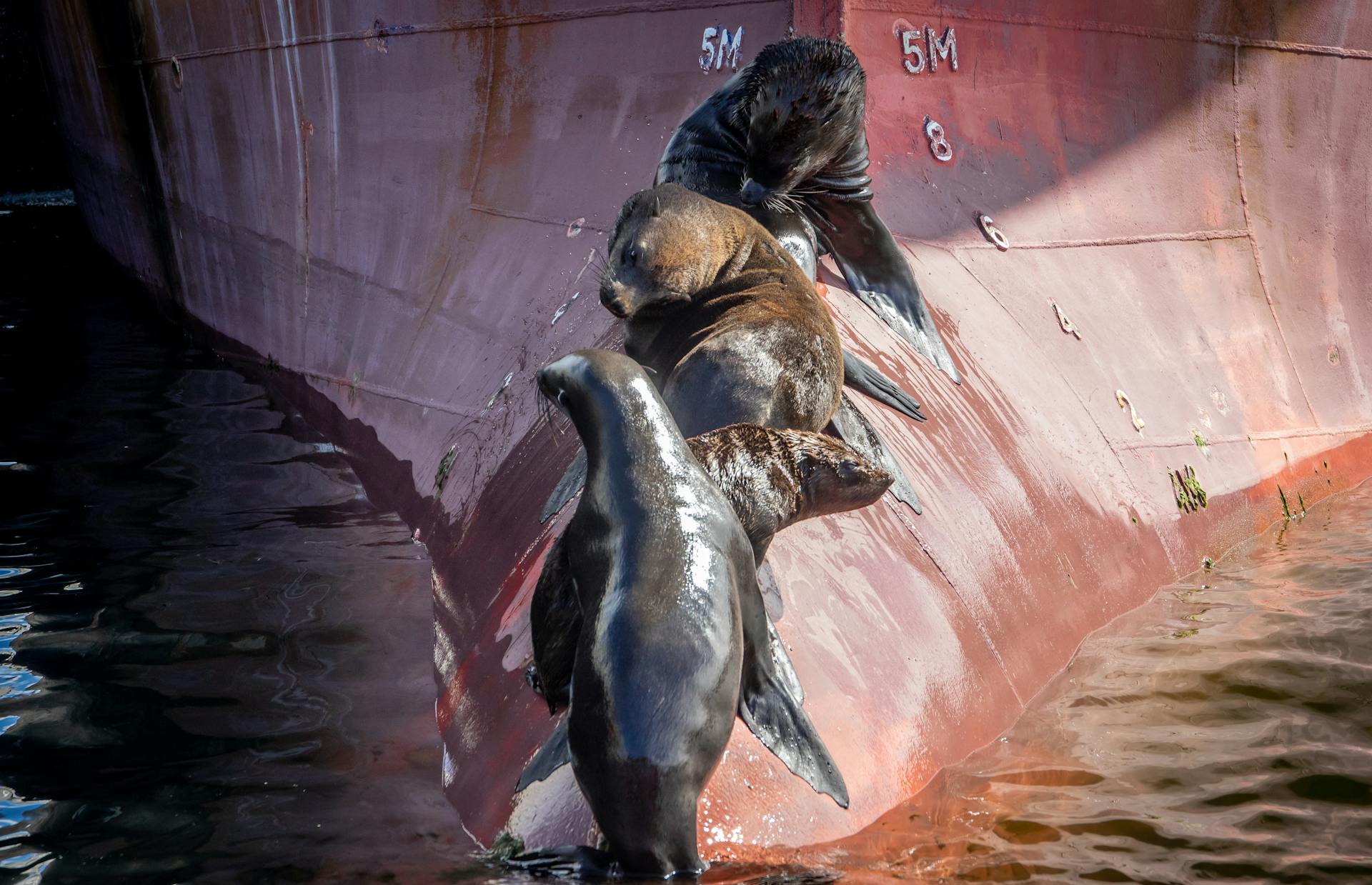
Vessels must retain a signed copy of this information onboard the vessel for 2 years. This can be met by maintaining a copy of the reporting form completed pursuant to § 151.2060 of this subpart, in addition to maintaining a record of the sediment information.
To comply with ballast water management regulations, vessels must use an approved ballast water management method. The implementation schedule for approved ballast water management methods varies depending on the vessel's ballast water capacity and date constructed.
Here is the implementation schedule for approved ballast water management methods:
Vessels must also follow additional requirements, such as avoiding the discharge or uptake of ballast water in areas within, or that may directly affect, marine sanctuaries, marine preserves, marine parks, or coral reefs. They must also minimize or avoid uptake of ballast water in areas known to have infestations or populations of harmful organisms and pathogens.
USCG and EPA Rules
The USCG and EPA have established rules to regulate ballast water discharge in US waters. These rules are designed to minimize the spread of invasive species and pollutants.
The USCG issued a final rule in 2012, which requires ships to use ballast water treatment systems or exchange ballast water mid-ocean to avoid sensitive areas. The rule also sets standards for the allowable concentration of living organisms in ballast water discharge.
To comply with the USCG rule, vessels have several options: zero discharge, using a USCG-approved ballast water treatment system, discharging to a shore reception facility or another vessel for treatment, or ballasting with potable water from a US public water system.
The EPA's Vessel General Permit (VGP) system includes ballast water discharges under 'discharges incidental to the normal operation of a vessel'. Additional requirements for the current VGP include calibration of sensors and periodical sampling of biological indicators and residual biocides.
On a similar theme: Us Shipyards in the United States
Here is a summary of the compliance timeline for the USCG final rule:
The Vessel Incidental Discharge Act (VIDA) was signed into law in 2018, which provides a new framework for EPA to establish standards on ballast water and for the USCG to lead on monitoring and enforcement.
Definitions and Authority
The Nonindigenous Aquatic Nuisance Prevention and Control Act of 1990 is the foundation for ballast water regulation in the United States.
This law, amended by the National Invasive Species Act of 1996, is the authority behind the regulations you'll be reading about.
The Shipboard Technology Evaluation Program (STEP) is a Coast Guard research program that aims to develop effective Ballast Water Management Systems (BWMS).
STEP requirements can be found at the Coast Guard's website.
The United Nations Convention on the Law of the Sea applies to this subpart, as well as definitions from 33 CFR 151.1504 and 33 CFR 160.202.
The Captain of the Port (COTP) is the Coast Guard officer designated to command a COTP Zone.
A COTP Zone is described in part 3 of this chapter.
The Assembly of the vessel has commenced when it comprises at least 50 tons or 1 percent of the estimated mass of all structural material, whichever is less.
The National Ballast Information Clearinghouse (NBIC) is a database operated by the Coast Guard and the Smithsonian Environmental Research Center.
The NBIC is mandated under the National Invasive Species Act of 1996.
The United States includes the States, the District of Columbia, Guam, American Samoa, the Virgin Islands, the Commonwealth of Puerto Rico, the Commonwealth of the Northern Mariana Islands, and any other territory or possession over which the United States exercises sovereignty.
A voyage is any transit by a vessel destined for any United States port or place.
Nothing in this subpart relieves the master, owner, operator, agent, or person in charge of a vessel of any responsibility, including ensuring the safety and stability of the vessel and the safety of the crew and passengers.
Frequently Asked Questions
What are the D1 and D2 standards for ballast water?
The D1 and D2 standards are international guidelines for ballast water quality, set by the International Maritime Organization (IMO) to prevent the spread of invasive species and diseases. These standards regulate the maximum number of living organisms allowed in ballast water, helping to protect marine ecosystems worldwide.
What size ships need to comply with the US ballast water management requirements?
Ships of 400 gross tonnage and above must comply with ballast water management requirements. Existing ships of this size, except certain types like floating platforms, must also carry a specific certificate.
What is the latest amendment to the ballast water management convention?
The latest amendment to the Ballast Water Management Convention is Regulation 383(81), which requires electronic ballast water record books from October 2025. This mandatory change aims to improve record-keeping and management of ballast water.
Sources
- https://en.wikipedia.org/wiki/Ballast_water_regulation_in_the_United_States
- https://www.epa.gov/newsreleases/epa-issues-national-requirements-protect-us-waterways-pollutants-discharged-vessels
- https://www.ecfr.gov/current/title-33/chapter-I/subchapter-O/part-151/subpart-D
- https://www.nepia.com/regulation/
- https://shop.witherbys.com/us-ballast-water-management-regulations/
Featured Images: pexels.com
